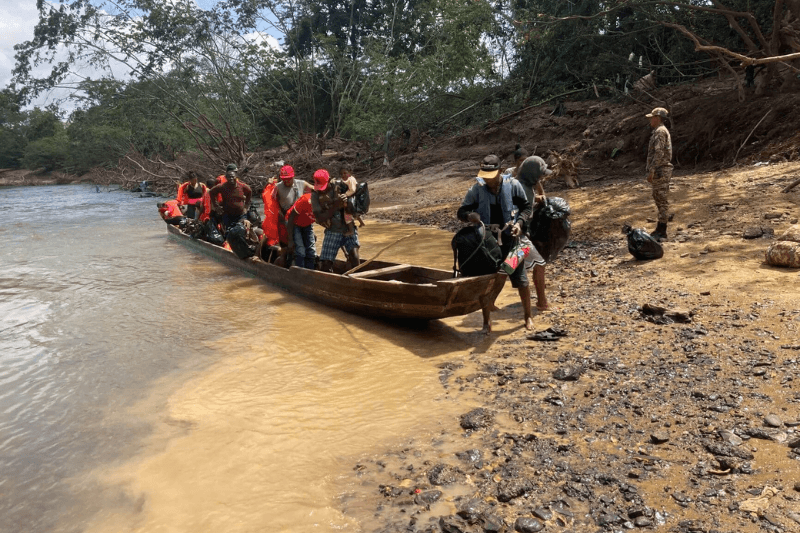

humanitarian crisis unfolding the darién gap migration challenge
In the first nine months of this year, a startling 400,000 migrants made the arduous journey to the United States across the Darién Gap, a deadly and roadless wilderness that separates South and Central America. This essay investigates the increasing humanitarian situation, examining its underlying roots, the difficulties experienced by migrants, and the depleted financial capabilities of regional governments.
The region’s resources and capacities are being put under strain as a result of the growing number of migrants who are trying to pass the Darién Gap. The situation is characterized by an enormous flood of migrants, including a sizable number of young children who are particularly vulnerable and must travel at risk of robbery and sexual abuse.
People migrate from South America, Africa, and Asia because they want to get out of the poverty, violence, and insecurity that exist in their home countries. The prospect of a better life in the United States represents a source of opportunity for many. Most of the settlers are from Venezuela and are escaping political and economic turmoil.
According to human rights advocates, policies in the United States and Mexico are unintentionally driving migrants along this risky route. Changes in Mexican visa regulations have forced migrants to choose the dangerous jungle path, worsening the issue.
The lack of safer alternatives for migrants and refugees from South America is to blame for the increase in crossings at the Darién border. The Biden administration’s efforts to redirect migrants through regional processing centers in Colombia have encountered difficulties because of the long appointment processes and constrained admissions, ultimately failing to stop the ongoing influx of migrants.
The region’s governments are under resource strain due to the rising number of immigrants. The situation has been deemed a risk to public security in Panama, and an emergency has been declared in Costa Rica. Essential medications are frequently out of stock in medical institutions, which is unpleasant for migrants.
The Darién Gap journey, which might last three days to a week, is tragically marked by deaths and perils. Last year, at least 140 fatalities were recorded, with several migrants losing their lives while crossing nighttime flooded rivers.
An important humanitarian catastrophe has arisen as a result of the increase in migrant crossings through the Darién Gap, underlining the necessity of international cooperation to address the underlying causes of migration and create safer migrant routes. As nations struggle to address this issue, it is crucial to put the security and welfare of migrants first and work towards all encompassing solutions that reduce the suffering and dangers involved in this risky voyage.
In a controversial plan, The Trump administration is considering deporting migrants to Libya by U.S. military flights, three U.S. officials…
In a landmark legal victory, Meta Platforms has won a settlement against Israeli spyware firm NSO Group for $168 million…
South Korea has unveiled a preferential immigration program, the Top-Tier Visa Program to recruit highly skilled foreign nationals in high-tech…
The American jewellery industry is a pillar of the luxury goods market and is warning that the US was exploring…
Novo Energy, the battery manufacturing initiative co-founded by Volvo Cars and Northvolt, announced that it would cut 50% of its…
The Trump administration announced a national review targeting approximately 450,000 migrant children who crossed the US-Mexico border without their parents,…
This website uses cookies.
Read More